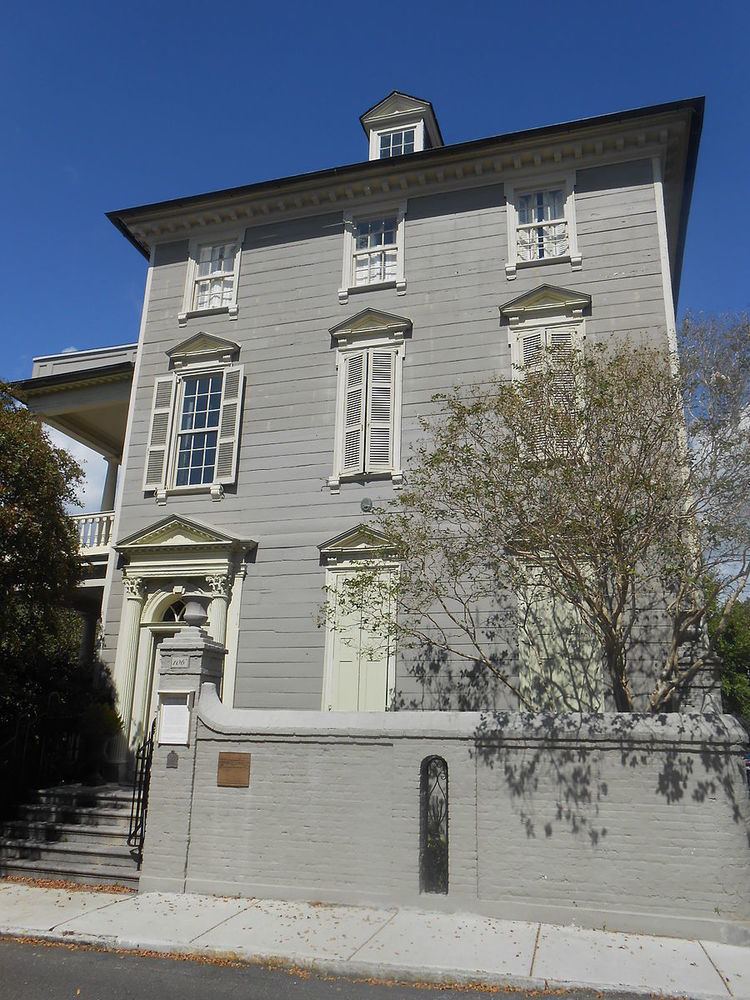Built 1772 Designated NHL November 7, 1973 Opened 1772 | NRHP Reference # 70000578 Designated NHLDCP October 9, 1960 Area 2,024 m² Added to NRHP 22 October 1970 | |
 | ||
Address 106 Tradd St, Charleston, SC 29401, USA Similar Miles Brewton House, Clark Mills Studio, Simmons‑Edwards House, Branford‑Horry House, Edward Rutledge House | ||
The Colonel John Stuart House is a historic house at 104-106 Tradd Street in Charleston, South Carolina. Built in 1772, it is the city's oldest known example of a side-hall plan house. It is nationally significant as the home of Colonel John Stuart, who was the King's Superintendent of Indian Affairs in the South. He did much to improve relations with the Five Civilized Tribes, especially the Cherokee Nation between the Seven Years' War and the American Revolutionary War. It was declared a National Historic Landmark in 1973.
Description and history
The Stuart House is located in historic downtown Charleston, at the northwest corner of Tradd and Orange Streets. It is a three story wood frame structure, with a hip roof, flushboarded front, and clapboarded side and rear walls. The main facade faces south, with the front entrance in the leftmost of three bays, flanked by fluted Corinthian columns and topped by a rounded transom window entablature and gabled denticulated pediment. Windows on the first two levels are topped by gabled and bracketed pediments, with bracketed lintels. Third floor windows, which butt against the eave, have a simpler hood above. The building interior is arranged with a long hall on the left, with the main stair at its rear. A significant number of it interior finishes are high-quality and careful 20th-century reproductions of the originals, which were moved to a museum in 1930.
The house was built in 1772 for John Stuart, a native-born Scot who came to North America in 1746. In 1762 he was appointed Superintendent of Indian Affairs for the southern British colonies, in which role he was involved in maintaining peaceful relations with the Native American tribes of the region, in particular the Five Civilized Tribes. Politically Loyalist as relations deteriorated between the colonies and Great Britain, Stuart was arrested in 1775 for inciting the Natives against the colonists in the early stages of the American Revolutionary War. He escaped imprisonment, and fled to West Florida, from where he directed Native activities in opposition to the rebel colonists until his death in 1779.
